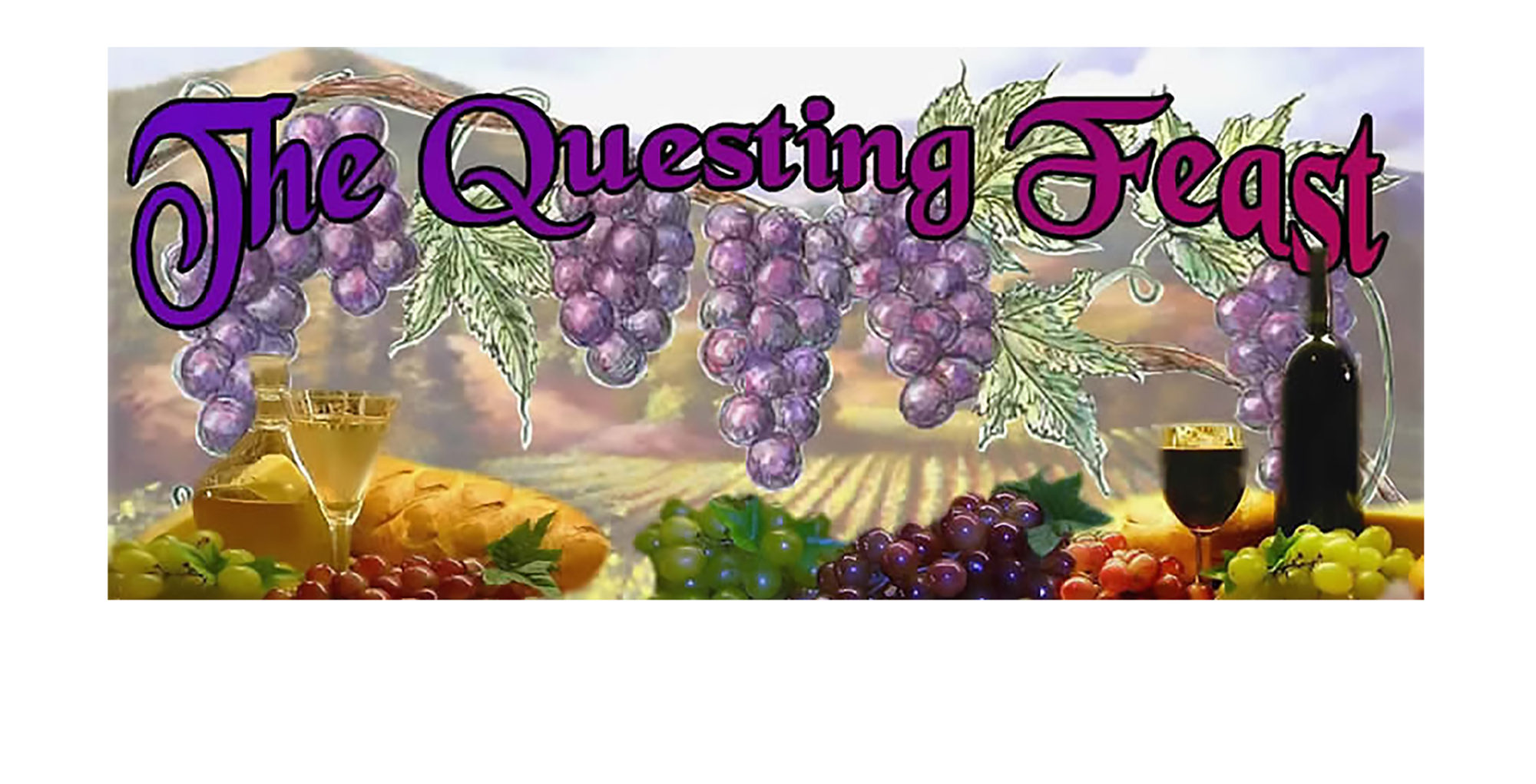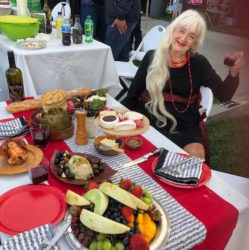The Questing Feast was created in April of 2008 by Geraldine Duncann, writer, artist, historian, chanteuse, and bon vivant.
Geraldine, descendent of those hardy souls who leavened California with their personalities, was born on a Sunday, Mother’s Day, May 9, 1937. She died on Tuesday, February 18, 2020, aged 82.
An on-and-off smoker since age 18, she had begun showing signs of lung cancer in 2013. Geraldine’s parents were old-stock farmers, self-sufficient and determined. They also followed the nutritional teachings of Adelle Davis, and had helped Ms. Davis with testing the recipes she published in her books. A firm believer in “Let thy food be thy medicine,” Geraldine opted to avoid medical intervention, instead, focusing on treating herself through nutrition. She remained active and appeared healthy until just a few months before her death.
Geraldine has variously been described as everything from “a Renaissance woman” to “a force of nature.” She was so very many things. In her youth, she was the California State high diving champion and an ardent basketball player. She attended the California College of Arts and Crafts in the 1950s, earning her BA in Color and Design.
CCAC was where she met her first husband, Donald Namohala Yuen. In addition to being art students, they were scuba divers, and salvaged artifacts from the waters of the Bay Area. On land, they also salvaged the beautiful windows, woodwork, doorknobs, and such from the wonderful old Bay Area houses which were being torn down at that time. These were used in building a replica Dutch Galleon, The Pele, which plied the estuaries of Northern California. Threatened with loss of academic standing, they finagled a way to have the boat recognized as an art project for their respective degrees.
An active part of the Bay Area arts scene, she and Don were contemporaries and consociates of people such as Don Clausen, Jade Fon, Betty Pleshe, Frank Porpet, and Will Summers.
A principal in the bars The Aardvark, The Aardvark II, and The New Orleans House, Geraldine was influential in giving a start to numerous young bands which later became a major part of the Bay Area music scene.
Those who remember the arts festivals and fairs of 1960s through 1980s California may remember her hawking her ceramic wares and jewelry from Haight-Ashbury in San Francisco to “Beautiful Downtown Burbank” in Los Angeles.
Her third husband, Robert Orser, supported and facilitated much of her work in researching and documenting the food, cookery, and lifestyles of the early British Isles, and made possible much of her work and service for the Renaissance Pleasure Faire and Society for Creative Anachronism.
Geraldine was an influential part of the Society for Creative Anachronism and the Renaissance Pleasure Faire. She was close friends of Phyllis Patterson, Marion Zimmer-Bradley, Diana Paxton, Tracey Blackstone, the Andersons, and other foundational members. In the words of her ex-husband Robert Orser and her friend Tracey Blackstone, “Geraldine invented SCA feasting! She set the standard. Before that, we just had pot lucks.”
She was an author, educator, entertainer, designer, ceramicist, chanteuse, and much more.
Her favorite quote was from Aunty Mame, “Life is a banquet, and most poor suckers are starving to death!”
It was my great fortune to have a final few months living with Geraldine, my mother. During that time I was able to glean more grains of wisdom and family lore from her fertile field.
It was her sincere wish that her work continue, and that people be inspired to fill their platters to heaping at life’s banquet.








